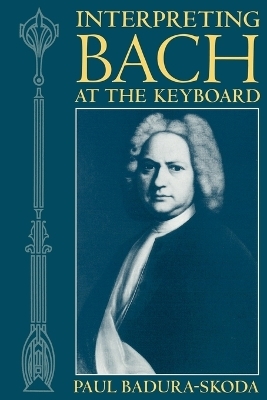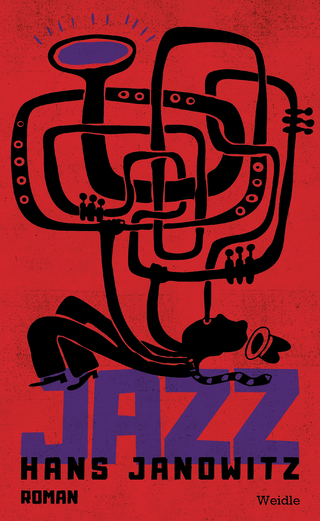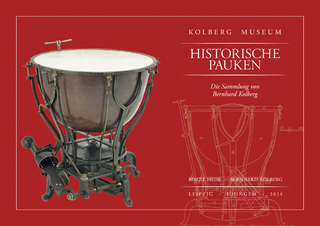
Interpreting Bach at the Keyboard
Seiten
1995
Oxford University Press (Verlag)
978-0-19-816576-7 (ISBN)
Oxford University Press (Verlag)
978-0-19-816576-7 (ISBN)
A study of problems surrounding the interpretation of Bach's keyboard music, this work looks at rhythm, tempo, articulation and dynamics, as well as the instruments for which Bach's music was intended. It also includes a discussion of ornamentation.
The ever-increasing number of performances of Bach's music is a sign of its enduring vitality. Yet there exists a diversity of interpretation of a magnitude that probably applies to no other composer. Assessing the varying merits of these interpretational approaches, and getting to grips with the sources and documents on which they are based, can be extremely difficult for a modern performer.
Paul Badura-Skoda, who has been studying and performing Bach's keyboard music for more than forty years, here presents a host of valuable new insights drawn from his deep knowledge of the sources and of the problems of interpretation. He looks in detail at the various aspects of Bach's music, providing chapters on rhythm, tempo, articulation, and dynamics. He also examines the instruments for which Bach's music was intended, and discusses interpretational issues arising from this, as well as problems of sonority. The second part of the book is devoted to a comprehensible discussion of ornamentation with a detailed examination of the signs and symbols used by Bach. This discussion is prompted not only by its central importance to baroque music in general, but also because the author believes so much of Bach's ornamentation in current performance practice is monotonous and fails to correspond to the baroque style at all.
Sometimes contentious, always stimulating, Paul Badura-Skoda's text conveys a passion for an informed interpretation of Bach's music based upon a recognition and respect for Bach's musical and intellectual intentions. Copiously illustrated throughout with music examples, Interpreting Bach at the Keyboard will take its place as a standard work for all students and performers of Bach's keyboard music.
The ever-increasing number of performances of Bach's music is a sign of its enduring vitality. Yet there exists a diversity of interpretation of a magnitude that probably applies to no other composer. Assessing the varying merits of these interpretational approaches, and getting to grips with the sources and documents on which they are based, can be extremely difficult for a modern performer.
Paul Badura-Skoda, who has been studying and performing Bach's keyboard music for more than forty years, here presents a host of valuable new insights drawn from his deep knowledge of the sources and of the problems of interpretation. He looks in detail at the various aspects of Bach's music, providing chapters on rhythm, tempo, articulation, and dynamics. He also examines the instruments for which Bach's music was intended, and discusses interpretational issues arising from this, as well as problems of sonority. The second part of the book is devoted to a comprehensible discussion of ornamentation with a detailed examination of the signs and symbols used by Bach. This discussion is prompted not only by its central importance to baroque music in general, but also because the author believes so much of Bach's ornamentation in current performance practice is monotonous and fails to correspond to the baroque style at all.
Sometimes contentious, always stimulating, Paul Badura-Skoda's text conveys a passion for an informed interpretation of Bach's music based upon a recognition and respect for Bach's musical and intellectual intentions. Copiously illustrated throughout with music examples, Interpreting Bach at the Keyboard will take its place as a standard work for all students and performers of Bach's keyboard music.
Professor Paul Badura-Skoda is a pianist and scholar.
PART 1. GENERAL PROBLEMS OF INTERPRETATION ; PART II. STUDIES IN ORNAMENTATION
| Erscheint lt. Verlag | 22.6.1995 |
|---|---|
| Reihe/Serie | Clarendon Paperbacks |
| Übersetzer | Alfred Clayton |
| Zusatzinfo | halftones, music examples, tables |
| Verlagsort | Oxford |
| Sprache | englisch |
| Maße | 155 x 235 mm |
| Gewicht | 919 g |
| Themenwelt | Kunst / Musik / Theater ► Musik ► Instrumentenkunde |
| Kunst / Musik / Theater ► Musik ► Klassik / Oper / Musical | |
| ISBN-10 | 0-19-816576-5 / 0198165765 |
| ISBN-13 | 978-0-19-816576-7 / 9780198165767 |
| Zustand | Neuware |
| Haben Sie eine Frage zum Produkt? |
Mehr entdecken
aus dem Bereich
aus dem Bereich
Roman
Buch | Hardcover (2024)
Wallstein Erfolgstitel - Belletristik und Sachbuch (Verlag)
20,00 €
die Sammlung von Bernhard Kolberg
Buch | Hardcover (2024)
E Reinhold (Verlag)
39,00 €


